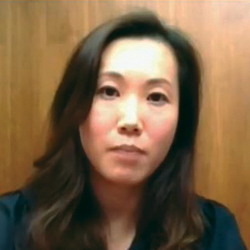Risk: A Global Conversation
Pandemic Viewpoints
Industry experts talk to AMBestTV about how COVID-19 is impacting the insurance market. Special Risk Section sponsored by LexisNexis.

George Hansen
Senior Industry Research Analyst
AM Best Rating Services
“Life and health insurers manage pandemic risk primarily through stress testing. These stress tests involve shocks to mortality, morbidity that last a fairly short period of time before grading back to the normal assumptions. Another area that insurers might overlook is the impact on the GDP.
The Spanish flu, for instance is estimated to have cost the GDP 4.25%. Companies that have economic capital models are in a good position to model those kind of events that go along with the increased mortality and morbidity risks.
A further stress test that companies can look at is the reinsurance. There's a potential for disruptions in reinsurance, with a high volume of claims that could be a result of a pandemic. There are a lot of things other than just the mortality and morbidity risks that companies can use to test or manage the pandemic risks.”

Bruno Caron
Senior Financial Analyst
AM Best Rating Services
“Pandemic risk is captured within all four building blocks [of the A.M. Best methodology]. To begin with, with the balance sheet, reinsurance is a major aspect of pandemic. Also, multiple other factors, such as liquidity, fungibility, strength of reserves, quality of capital, all of these aspects that we look at in terms of qualitative and both quantitative are very important.
Under a pandemic scenario, those mechanisms could be put to test. Of course, the absolute level of capital and the risk-adjusted level of capital are also extremely important.
Going on the operating performance, the diversity of earnings could also help as well. That gets into the business profile with concentration issues. Concentration issues are obviously a very predominant factor for property and casualty companies. For life companies, on their pandemic stress, that would be one place where that could come into play.
Last and not least, enterprise risk management, stress tests and the identification of the actual risk, the quantification of the actual risk within the risk appetite and risk tolerances, those particular stresses get the conversation going in terms of leading back to our first two building blocks, the capital that is required as well as the earnings that are at risk.”

James Chan
AM Best Asia-Pacific Analyst
“A product most directly related to the claims arising from the virus outbreak would be health insurance.
Health insurance can be sold by both life and nonlife companies in China.
Indeed, this segment has seen significant growth over the past few years. In 2019, the combined growth in the health segment of direct premiums written reached as high as 30%. This segment accounts for roughly 6.5% for the total nonlife net premiums written. We think that the claims arising from the virus outbreak will have a relatively limited impact to Chinese insurers' underwriting profitability.
Take life insurers as an example. Currently within their health portfolio, roughly 65% of the premiums were sourced from critical illness policies.”

Christie Lee
AM Best Asia-Pacific Analyst
“Overall, the earnings for both life and nonlife insurance markets are expected to have profit weakening in 2020, especially in its first half due to low economic consumptions and slower new business growth, as well as lower investment return.
On the new business growth side, the new business activities, especially the agency channel, will no doubt be contracted due to extended Chinese New Year holiday, contagion containment measures such as city lockdowns and travel restrictions.
Also, some measures that discourage in-person interactions.
This measure is also going to impact the nonlife insurance new business growth. This measure is also going to affect the nonlife insurance new business growth because these are going to affect the new car sales, which is the largest line of business on the nonlife market.
On the investment side, the insurers are going to experience challenges from low interest rate environment, increasing credit risk and volatile equity markets.
We have observed a couple of years of increasing credit risk. Due to the economic pressure or downturn due to the coronavirus, there's potential increase, further increase in credit risks.
Nonlife insurance earnings historically depend heavily on investment return to subsidize the thin underwriting profit margin.
The volatile investment environment is going to add negative uncertainty to their profitability in 2020.”
Visit www.ambest.tv to watch the video interviews with these executives.